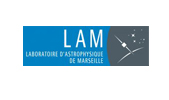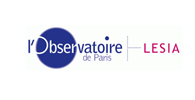General
SPHERE+ Proposal
Proposal of a SPHERE upgrade submitted to ESO for the workshop VLT 2030
Peering through SPHERE Images : A Glance at Contrast Limitations

Various structures are visible within Spectro-Polarimetric High-contrast Exoplanet REsearch instrument (SPHERE) images that are not always straightforward to interpret. In this article we present a review of these features and demonstrate their origin using simulations. We also identify which expected or unexpected features are limiting the contrast reached by the instrument and how they may (...)
SPHERE : the exoplanet imager for the Very Large Telescope

Observations of circumstellar environments to look for the direct signal of exoplanets and the scattered light from disks has significant instrumental implications. In the past 15 years, major developments in adaptive optics, coronagraphy, optical manufacturing, wave- front sensing and data processing, together with a consistent global system analysis have enabled a new generation of (...)
Low Wind Effect on VLT/SPHERE : impact, mitigation strategy, and results

The low wind effect is a phenomenon disturbing the phase of the wavefront in the pupil of a large telescope obstructed by spiders, in the absence of wind. It can be explained by the radiative cooling of the spiders, creating air temperature inhomogeneities across the pupil. Because it is unseen by traditional adaptive optics (AO) systems, thus uncorrected, it significantly degrades the (...)
End-to-end simulation of AO-assisted coronagraphic differential imaging : estimation of performance for SPHERE
SPHERE (Spectro Polarimetric High contrast Exoplanet REsearch), the planet finder instrument for the VLT is designed to study relatively bright extrasolar giant planets around young or nearby stars. SPHERE is a set of three instruments fed by the same AO-system, two of them share the same coronagraph. This complex system has been modeled with Fourier Optics to investigate the performance of (...)
Active optics methods for exoplanet direct imaging. Stress polishing of supersmooth aspherics for VLT-SPHERE planet finder
Context. The next generation of exoplanet hunters will be targeting hot Jupiter-like exoplanets orbiting around nearby stars through direct imaging. The high contrast needed for such planet finders requires optical surfaces free of high spatial frequency ripples that might remain in the post-coronagraphic image as quasi-static speckles. Aims : We report results on the manufacturing of three (...)
SPHERE : a ’Planet Finder’ instrument for the VLT
Direct detection and spectral characterization of extra-solar planets is one of the most exciting but also one of the most challenging areas in modern astronomy. The challenge consists in the very large contrast between the host star and the planet, larger than 12.5 magnitudes at very small angular separations, typically inside the seeing halo. The whole design of a "Planet Finder" instrument (...)
Performance of the extreme-AO instrument VLT/SPHERE and dependence on the atmospheric conditions
SPHERE is the high-contrast exoplanet imager and spectrograph installed at the Unit Telescope 3 of the Very Large Telescope. After more than two years of regular operations, we analyse statistically the performance of the adaptive optics system and its dependence on the atmospheric conditions above the Paranal observatory, as measured by the suite of dedicated instruments which are part of (...)
Performance of the VLT Planet Finder SPHERE. I. Photometry and astrometry precision with IRDIS and IFS in laboratory
The new planet finder for the Very Large Telescope (VLT), the Spectro-Polarimetric High-contrast Exoplanet REsearch (SPHERE), just had its first light in Paranal. A dedicated instrument for the direct detection of planets, SPHERE, is composed of a polametric camera in visible light, the Zurich IMager POLarimeter (ZIMPOL), and two near-infrared sub-systems : the Infra-Red Dual-beam Imager and (...)














